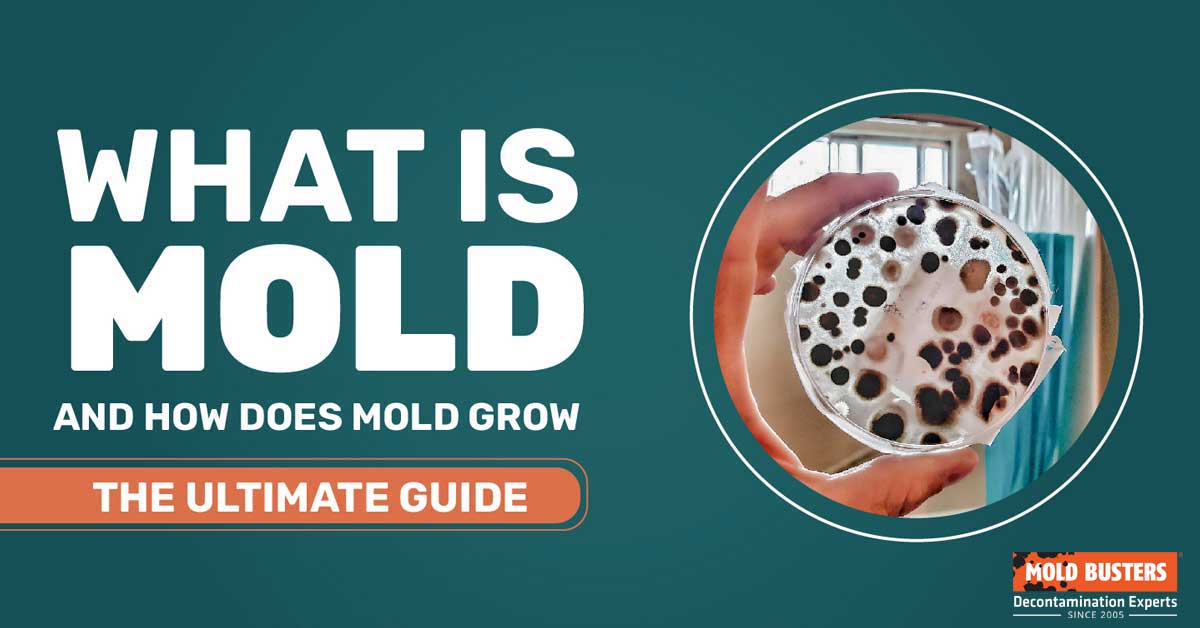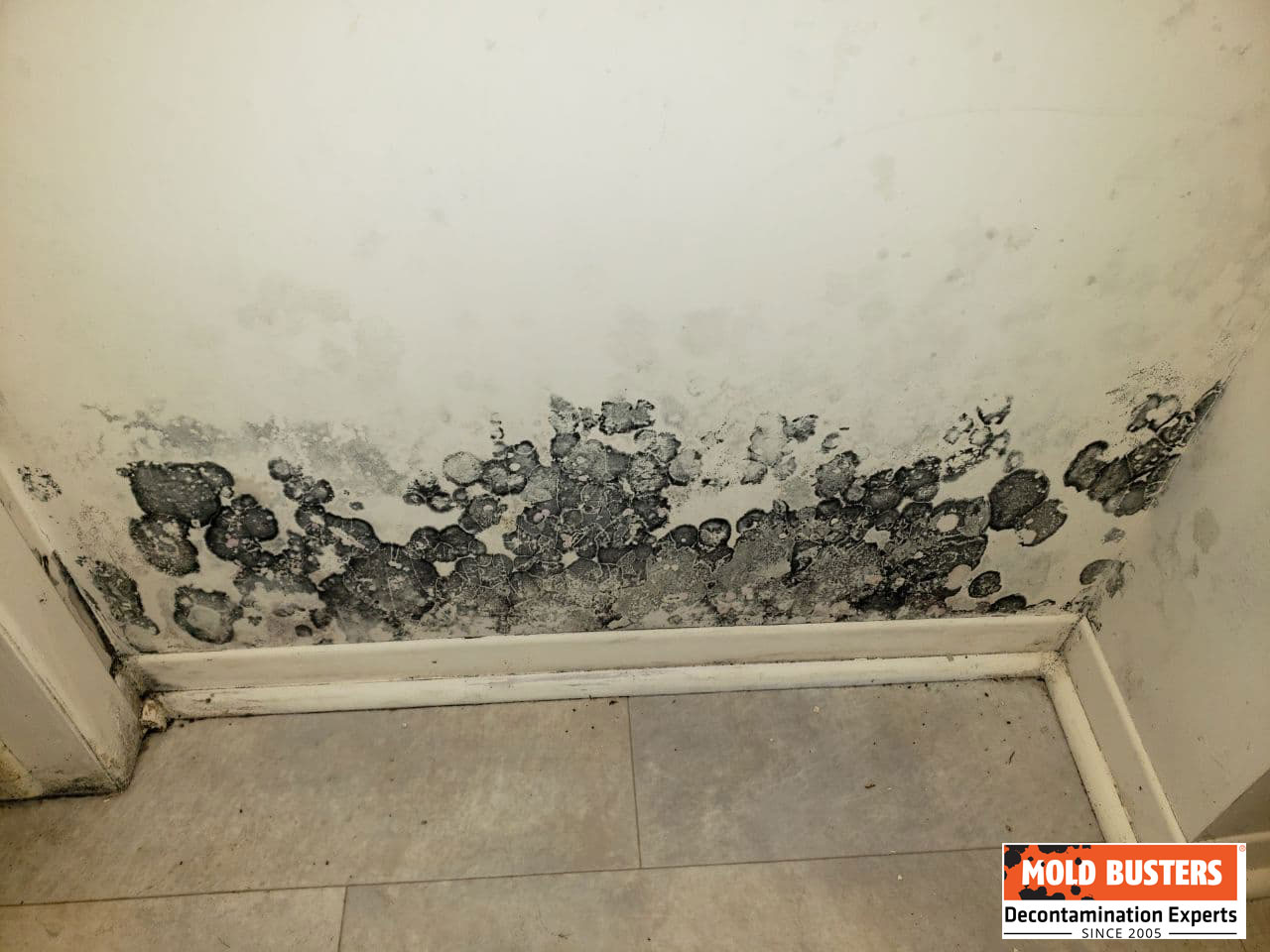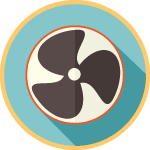What is Mold and What Does Mold Look Like?
Mold can be tricky to identify, which is why professional testing services matter more than ever. In order to safeguard your own wellness and safety, you must be able to accurately identify and effectively address mold problems. Before getting started, however, just what is mold? Let’s explore in more detail to brush up on the fundamentals.
Mold is an eyesore and a homeowner’s worst nightmare. However, there is much more you should know about mold because once you understand what it is, you will be better able to prevent its growth.
To begin, here are some basic facts about mold:
- Molds are fungi.
- Molds grow on plants, wood, fabric, soil, food, drywall, floors and ceilings.
- Molds produce microscopic spores that germinate where moisture has accumulated.
- Mold growth threatens the structural integrity of a building.
- Mold exposure can lead to serious health problems.
Worried About Mold? Get a Free Inspection!
Mold can be tricky to identify and hazardous to your health. Don’t let it go unchecked! Contact Mold Busters for a free virtual mold inspection. Our experts will provide you with a comprehensive assessment and a plan to tackle any mold issue, ensuring your home is safe and healthy. Act now to protect your space!
What is mold?
Just like yeast and mushrooms, mold (or mould) is a type of fungus that grows on plants, wood, fabric, food and any other organic material. Put simply, mold is a natural recycler of dead organic matter. Although it sounds like a nice thing to do for nature, in most cases, it is not a nice thing to do for humans.
What does mold look like?
Individual mold colonies are very small and impossible to see without a microscope, but once a mold colony emerges, it can form visible spots on special places.
Mold usually comes in these colors: black, blue or green. The color of mold is determined by various factors such as type, nutrient source, age of the colony, etc. Of all mold types, black mold (officially called Stachybotrys) is considered to be the most harmful one to the health of living beings.
The type of mold will determine the way of remediation. That said, it is very important to test it first. Knowing what mold type you have to deal with will be helpful even after conducting remediation activities.
You may also want to consider mold inspection in Montreal or mold inspection in Ottawa for a comprehensive understanding.
Different Types of Mold
Unfortunately, not all mold types are the same, but we can roughly divide them into 3 big types:
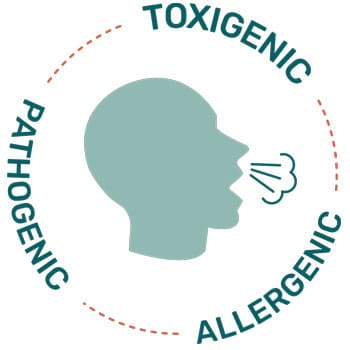
- Allergenic – this type of mold is the least harmful of all mold types; however, it can cause problems for people who are allergic to mold or have asthma. Allergenic mold is usually not life-threatening.
- Pathogenic – this type is often harmful, not only for people with asthma or mold allergies but for healthy people too. For example, this type of mold can cause hypersensitivity pneumonitis, an acute response resembling bacterial pneumonia
- Toxigenic mold – this type of mold can actually cause serious health issues, both temporary (eye irritation or cough) and permanent (e.g. immunosuppression, neurological disorders, or cancer). Toxigenic mold produces mycotoxins – a toxic chemical present inside or on the surface of the mold spore, which can be inhaled, ingested, or touched.
Now that you know what mold actually is, you should also understand what causes it.
How does mold grow?
Just like any other living being, mold needs water to grow. As a matter of fact, without water, mold cannot grow at all. Other factors that are crucial for mold growth are a food source, oxygen, and temperatures between 40 and 100 degrees Fahrenheit.
Does that mean that by removing the main mold growth factors, we can eliminate mold once and for all?
Sadly, the answer is no. It is almost impossible to keep a place mold-free mainly because you cannot eliminate oxygen from a place and actually stay at that place, nor can you build a house without any organic materials such as wood, carpet, plants, etc.
What you can (and should do) is focus on:
- Moisture control
- Dust control
- Proper ventilation of your house
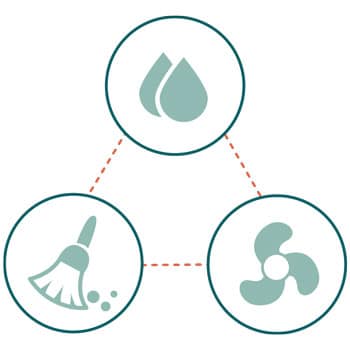
If you want to ensure a healthy living environment, it’s important to know the common causes of mold and repair them sooner rather than later. And when in doubt, contact the mold experts at Mold Busters. You may also consider air quality testing in Ottawa or air quality testing in Montreal to ensure a healthy environment.
Is it mold or mildew?
Although often considered to be the same thing, mold and mildew are better explained as two brothers with a similar feature. Both of them are frequently seen in homes, especially in moist and warm areas such as food, walls, shower, etc. That’s where the similarity ends.
Mold is a living organism that produces airborne spores and as such has harmful effects on health. Mildew is an accumulation of dirt and grime. It is not a living organism, it will not reproduce and cannot produce harmful mycotoxins, but it can potentially decrease the quality of your life. Unlike mold, which comes in much darker shades, mildew is often white or grey. While mildew is easily treated with a store-bought cleaner and a scrubbing brush, mold often requires a more professional touch.
Just like mold, mildew also requires certain factors to develop and grow. The requirements include a food source, moisture and temperatures between 77 and 88 degrees Fahrenheit.
Where to look for mold
In this section, you’ll learn about the most common places for mold growth in and around the home.
Generally speaking, mold grows on bathroom grout, water-damaged walls, and wet or damp carpets and as well as around tubs, sinks and windows.
But sometimes mold can hide behind walls, underneath floorboards and in air conditioners, so make sure to check all of these areas thoroughly.
At Mold Busters, we use infrared cameras, moisture meters, air sampling pumps, and other top-of-the-line inspection equipment to check your home from top to bottom and in the most hard-to-reach spaces.
Don’t hesitate to contact us—we’re Ottawa and Montreal’s mold removal experts.

Did you know?
87% of homes we tested have mold?! Find out more exciting mold stats and facts inside our mold statistics page.
Health effects of mold
The presence of mold spores in an indoor environment is a big concern given that mold exposure has been linked to disease in plants, animals and humans.
No two reactions to mold will be the same. Both the extent of exposure and your level of sensitivity influence how you react.
It’s important to know the health effects and symptoms of mold exposure so that they are neither ignored nor mistaken for another ailment.
What impact does mold have on your health?
Everyone’s immune system and medical history is different. That said, most government or medical guidelines abstain from providing safe exposure limits to mold. Due to these variables, it is impossible to say if exposure to low concentrations of mold is safe since every individual will react differently.
The fact is that people with suppressed immune systems are most likely to experience health issues when they spend time in a room filled with mold. Although difficult to predict, exposure to mold growing indoors can be associated with nasal and sinus congestion, cough/sore throat, asthma (or exacerbation of it), nosebleed, headache, skin and eye irritation, etc. Long-term exposure to indoor mold can lead to health issues that develop faster for certain groups – infants, children and elderly people.
It is very important to keep in mind that some types of mold are capable of producing extremely potent toxins called mycotoxins, which can lead to severe health consequences such as cancer.
Mold prevention
It’s always better to prevent mold rather than deal with its effects. And because mold prevention is not as complex as mold removal, homeowners, business owners and tenants can all take preventative steps to avoid serious property damage and health complications due to mold.
Just some of the ways you can prevent mold are ensuring moisture control, proper ventilation, air exchange and cleanliness.
Examine areas you wouldn’t normally pay attention to while cleaning your home, and always stay updated on the latest mold prevention strategies.
Why test for mold?
Sometimes odours, stains and discoloration that you think are the results of mold can, in fact, be caused by smoke, dirt and debris, minerals or insects. Other times, symptoms you attribute to the common cold are actually caused by exposure to mold.
If you suspect that you have a mold problem, a mold test is the only way to get reliable answers to your worries. Only after professional testing will you be able to confirm the presence of mold and to move forward with remediation, which is absolutely crucial.
Remember, it’s not mold until it’s tested, so contact the mold experts at Mold Busters Montreal today or contact the mold experts at Mold Busters Ottawa to book your appointment!

Get Special Gift: Industry-Standard Mold Removal Guidelines
Download the industry-standard guidelines that Mold Busters use in their own mold removal services, including news, tips and special offers:
Published: September 10, 2018 Updated: July 11, 2024

Written by:
John Ward
Account Executive
Mold Busters
Fact checked by:
Michael Golubev
CEO
Mold Busters

